International Day of Older Persons: Alison Parker
Posted on October 2, 2023 by Microbiology Society
The 1st of October is International Day of Older Persons and this year’s theme is ‘Fulfilling the Promises of the Universal Declaration of Human Rights for Older Persons: Across Generations’. One of our long-standing members, Alison Parker, born in 1933, has shared insights into her upbringing and career journey as a microbiologist. Alison also captures the positives that come with getting older and differentiates lab technologies, from then and now.
Could you tell us a bit about yourself?
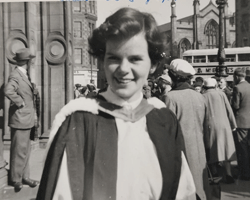
I was born in Kenya, attended school and grew up there. My father took up acreage under a scheme sponsored by the British Government after the end of the First World War. My father wanted to run cattle and/or sheep and did so for sixty years. Between 1950 and 1954, I studied for an Honours degree in bacteriology from the University of Edinburgh, UK. Today, such a degree would probably be termed ‘microbiology’ rather than ’bacteriology’. In my honours’ year, I worked on the Staphylococcus bacteria. This involved making cultures of the bacteria and studying various stages of its growth using turbidity measurements.
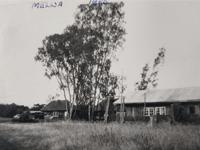
My first employment was a two-year stint at the United Kingdom’s Colindale facility, where we had specimens coming in from all over the world. My colleagues and I had to identify the relevant disease-causing pathogens and tested various phages (viruses that solely kill and selectively target bacteria) to see which were most effective.
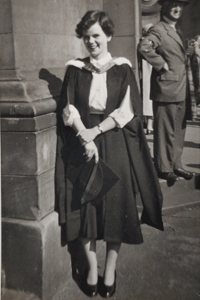
Following an appendicitis operation, I left Colindale and spent a year helping my brother Tom on his Dowlaw farm near Cockburnspath in Scotland. As a trained microbiologist, I took a particular interest in the various strains of bacteria found in dairy milk. I was very happy to return to my country of birth, where I worked at the Kabete veterinary laboratory, not far from Nairobi, Kenya. We mainly worked on controlling outbreaks of pleuropneumonia – a disease that affected cattle herds in the Maasai Mara area. The laboratory produced vaccines for this purpose. Kabete laboratory was where I met my future husband, John Parker in 1956. We were later married at the Thomson’s Falls Church (Thomson’s Falls is now Nyahururu, Laikipia County), then travelled down to the country club in Rumuruti for the reception. This was a wonderful occasion shared by as many members of the family and friends who could manage the trip to the venue. John and I went on honeymoon to the Kenya Safari Club in the foothills of Mount Kenya.
After our wedding, I went with John to the Chepalungu district where, in addition to bringing up a family, I had a civil service job maintaining records and assisting various researchers working on pleuropneumonia. John’s job in range management took us to government housing at Ngong Hills, then to a property we bought in Donald Road, Nairobi. My sons went to school at St Mary’s (which was within easy bicycle range of our home). Close to the end of our stay in Nairobi, I had a lecturing job at the University of Nairobi, Kenya.
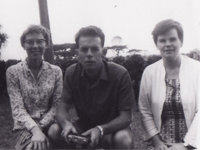
My family moved to Zimbabwe (then Rhodesia) in 1972 and I took up employment at the Public Health Laboratory (initially located in North Avenue Harare, then Salisbury). Upon completion of the new Andrew Fleming (Parirenyatwa) Hospital, the laboratory relocated there, and I was responsible for procuring equipment for and setting up the new facility. The main service we offered was of course, identifying disease causing pathogens and reporting back to doctors who had submitted the swabs/samples.
In 1980, we moved again – this time to a very pleasant coastal property in Fish Hoek, Cape Town, South Africa. I took up a position at a private laboratory with offices on the Foreshore. I travelled in to work every day using the excellent coastal line service running between Cape Town and Simonstown. After five very pleasant years in Fish Hoek, we made the difficult decision to move to Australia. I took up positions at public health facilities first in Cairns, then later, in Townsville. Eventually I retired and after, John sadly passed away. I then moved to Brisbane in 2007, where I still live to this day.
It’s International Day of Older Persons on 1 October, what have you found most rewarding about getting older?
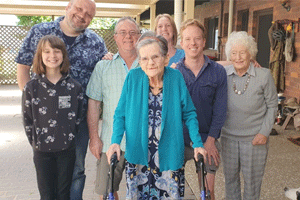
As I have gotten older, I have appreciated that people listen to what I have to say more carefully and tend to take the advice that I give. Also, I appreciate that people really do like coming to see me and put in the extra effort to spend time with me.
You have remained a Society member throughout your retirement, what have you found most beneficial about being a member during this time?
I have much appreciated the content that I have received every month since I became a member. There are many papers that have helped my ongoing learning and ability to contribute value wherever I have worked. Through the Society, I have made many lifelong friends who have always been there to help when I have been stumped!
Is there one scientist that has influenced your career the most, if so, who and why?
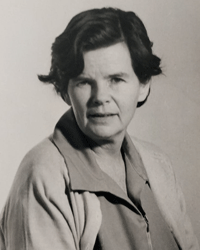
I wouldn’t say that there is any one scientist who has significantly influenced my career. In my younger days, I always took career advice from my peers and those I worked for. As my career moved forward so did theirs and I continued to be influenced by them. Later in my career, I found myself becoming an influencer of younger microbiologists and I much enjoyed giving meaningful advice.
In what ways did technology change throughout the course of your career?
Technology improved in all areas immeasurably through the years. From the quality of images that have improved with modern microscopes, to general lab equipment and technology around the lab. Most importantly, our ability to deal safely with lab material has removed ab infections as an issue. In my early career, we often dealt with lab infections as a result of the equipment and processes that we were dealing with at the time.
What is the most significant advice you would give to early career microbiologists?
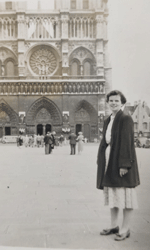
Practice, practice, practice. Spending hours looking through microscopes and learning, as well as understanding what you are seeing, is the most important advice I can give and the same advice that was given to me when I started my career.
What would you say has been the highlight of your career?
After graduation, in 1955, I was fortunate enough to work at the Colindale Laboratory in northern London, UK. Colindale was often sent the most interesting samples and specimens for analysis. During this period, my work was explorative learning and research. I found this to be both stimulating and interesting based on the wide spectrum of interesting work that we were asked to look at. I retired from my career as a microbiologist in the year 2000.
If you are interested in taking part in an awareness day, please complete our Awareness Days sign up form.

